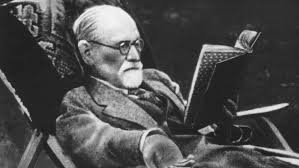
Reading Freud – Reading Group Commencing September 2021, Expressions of Interest Invited
Expressions of interest invited to join a ‘Reading Freud’ Group commencing September 2021. Small group and so limited places, meeting once a month on Zoom on Saturday mornings 10.30am – 12 midday. If interested please contact me on merrigat@tcd.ie.
“If the theory of analytic technique is gone into, it becomes evident that transference is an inevitable necessity.”[from:Postscript to A Case of Hysteria. SE VII:116i]
Book Club Remit
Parallel to reading Freud’s Papers on Technique we will work through Lawrence Friedman’s text Freud’s Papers on Technique and Contemporary Clinical Practice (2019)
**************************************************************************
Freud’s Papers on Technique is usually treated as an assemblage of papers featuring a few dated rules of conduct that are either useful in some way, or merely customary, or bullying, arbitrary and presumptuous. Lawrence Friedman reveals Papers on Technique to be nothing of the sort. Freud’s book, he argues, is nothing less than a single, consecutive, real-time, log of Freud’s painful discovery of a unique mind-set that can be produced in patients by a certain stance of the analyst.
What people refer to as “the rules”, such as anonymity, neutrality and abstinence, are the lessons Freud learned from painful experience when he tried to reproduce the new, free mind-set. Friedman argues that one can see Freud making this empirical discovery gradually over the sequence of papers. He argues that we cannot understand the famous images, such the analyst-as-surgeon, or mirror, without seeing how they figure in this series of experiments. Many of the arguments in the profession turn out to be unnecessary once this is grasped. Freud’s book is not a book of rules but a description of what happens if one does one thing or another; the choice is the therapist’s, as is the choice to use them together to elicit the analytic experience.
In the light of this understanding, Friedman discusses aspects of treatments that are guided by these principles, such as enactment, the frame, what lies beyond interpretation, the kind of tensions that are set up between analyst and patient, the question of special analytic love, the future of analytic technique, and a possible basis for defining Freudian psychoanalysis. Finally, he makes concrete suggestions for teaching the Papers on Technique.
Freud’s Papers on Technique and Contemporary Clinical Practice will appeal to all psychoanalysts and psychoanalytic psychotherapists concerned about the empirical basis of their customary procedures and the future of their craft.
Table of Contents
Introduction to this Book
PART ONE: THE TEXT
Preface to Chapter One: What is Papers on Technique?
Chapter One: Discovering How to Elicit the Psychoanalytic Phenomenon
Preface to Chapter Two: The Power of Being Personally Interested Without Wanting Anything
Chapter Two: Overview of Papers on Technique
Preface to Chapter Three. Working Through is the Patient’s Private Experience
Chapter Three: How to Pick Items out of the Flow of Process
PART TWO: THE IDEA OF FREUDIAN THERAPY
Introduction to Part Two
Chapter Four: What Lies Beyond Interpretation, and Is That the Right Question?
Chapter Five: Is There Life After Enactment?
Chapter Six: The Delicate Balance Between Work and Illusion
Chapter Seven: How and Why do Patients Become More Objective?
Chapter Eight: A Renaissance for Freud’s Papers on Technique
PART THREE: THE PSYCHOANALYTIC PHENOMENON
Introduction to Part Three
Chapter Nine Flirting with Virtual Reality
Chapter Ten Return to the Crucible
Chapter Eleven: Is There a Special Psychoanalytic Love?
Chapter Twelve: What Is Psychoanalysis?
PART FOUR: FREUD’S OWN VIEWS AND THE FUTURE
Introduction to Part Four
Chapter Thirteen: Two Freuds or One?
Chapter Fourteen: The Future: “The Frame”
Chapter Fifteen: Author Interviews Himself

